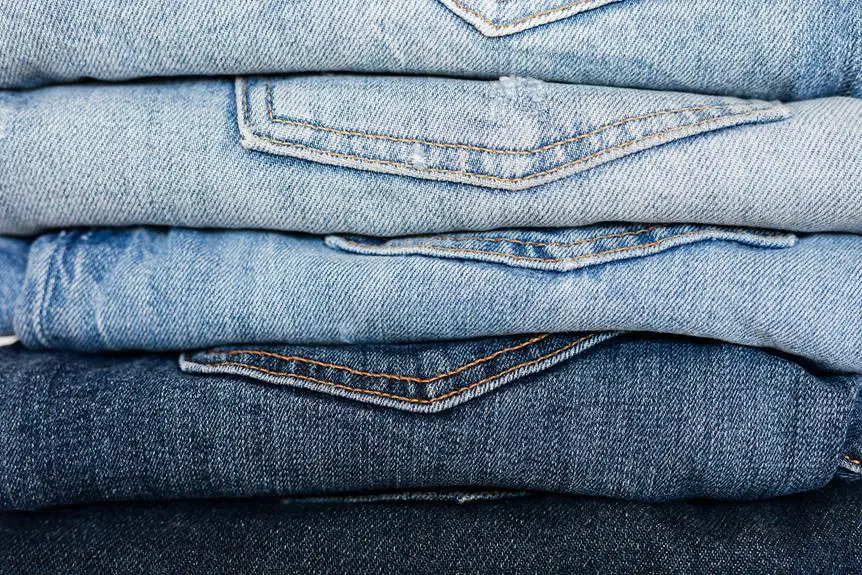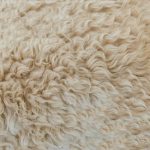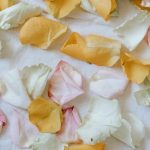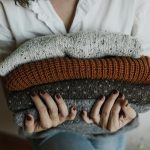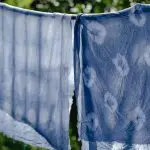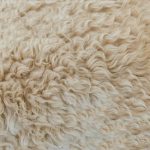When you're selecting quality voile fabric, it's essential to consider several key factors that can greatly impact your final choice. You'll want to think about the fiber type for breathability or luxury, the weave for durability versus elegance, and the weight for the right drape. Each of these elements plays a crucial role in how your fabric will perform in your project. But understanding these aspects isn't just about making a choice; it can influence the overall success of your design. So, what should you prioritize to ensure you're making the best decision?
Table of Contents
Understanding Voile Fabric
Voile fabric is a lightweight, sheer material often made from cotton or polyester, perfect for adding an airy touch to your home decor or wardrobe. You'll love how it drapes beautifully, creating soft, flowing lines that enhance any space or outfit. Its semi-transparent quality allows light to filter through, making it ideal for curtains, blouses, and overlays.
When choosing voile, consider its texture and weight. A smoother finish feels luxurious, while a slightly crisper fabric adds structure. You should also pay attention to the weave; a tighter weave indicates better durability and less chance of fraying. Voile is available in various colors and patterns, so you can easily find something that matches your style.
Another important aspect is the fabric's care instructions. Most voile can be machine washed on a gentle cycle, but it's wise to check the label. You might want to air dry it to maintain its shape and prevent shrinkage.
Key Fiber Types
When choosing voile fabric, the type of fiber plays a crucial role in its quality and performance.
You'll find both natural and synthetic options, each offering unique benefits.
Understanding these key fiber types helps you make an informed decision for your projects.
Natural Fiber Options
Natural fiber options like cotton, linen, and silk offer a range of textures and qualities that can enhance your voile fabric choices. When selecting voile fabric, consider these natural fibers for their unique characteristics and benefits.
Cotton: Known for its softness and breathability, cotton voile drapes beautifully and is easy to care for. It's perfect for lightweight curtains or garments.
Linen: This fiber provides a crisp texture and excellent durability. Linen voile has a natural luster and a relaxed look, making it ideal for casual or rustic designs.
Silk: For a luxurious feel, silk voile is unmatched. It's lightweight and has a stunning sheen that elevates any project but requires more careful maintenance.
Rayon: While technically a semi-synthetic fiber, rayon is derived from natural sources. It mimics the qualities of silk and cotton, offering a soft, flowing appearance.
Synthetic Fiber Choices
Synthetic fibers frequently offer unique advantages for voile fabric, including enhanced durability and ease of care. When you're choosing synthetic options, polyester and nylon are two key types to consider.
Polyester is popular for its wrinkle resistance and colorfastness, meaning your fabric will stay vibrant even after multiple washes. It's also less prone to shrinking, making it a reliable choice for window treatments or clothing.
On the other hand, nylon is known for its strength and elasticity. If you need something that can withstand wear and tear, nylon voile might be your best bet. It's lightweight and has a beautiful drape, perfect for flowing curtains or delicate blouses.
You might also encounter blends that combine polyester and nylon, offering the benefits of both. These blends can provide the softness of natural fibers while maintaining that all-important durability.
When selecting synthetic voile, always check the fabric's weight and feel. A good quality synthetic should feel smooth and have a nice drape. With the right choice, you'll enjoy the practicality of synthetic fibers without sacrificing style.
Importance of Weave
When choosing voile fabric, the weave plays a crucial role in both its appearance and longevity.
Different weave types can significantly affect how the fabric drapes and holds up over time.
Understanding these differences will help you make an informed decision for your projects.
Weave Types Overview
Understanding the various weave types is crucial for choosing the right voile fabric that meets your needs. Different weaves can greatly affect the look, feel, and performance of the fabric, so it's important to know what you're looking for.
Here are some common weave types you might encounter:
- Plain Weave: This simple weave is durable and offers a crisp, lightweight feel, making it a popular choice for curtains and clothing.
- Satin Weave: Known for its glossy surface and smooth texture, satin voile adds a touch of elegance but can be more delicate.
- Jacquard Weave: Featuring intricate patterns, jacquard voile can add visual interest to your projects, but it may also be heavier than other options.
Impact on Durability
The weave type you choose directly influences the durability of your voile fabric, impacting how well it withstands wear and tear over time.
When selecting voile, consider both the tightness and the pattern of the weave. A tighter weave generally offers greater strength, making the fabric less prone to fraying or tearing. If you're using voile for curtains or garments, a durable weave will ensure your fabric maintains its shape and appearance even after repeated use.
On the other hand, looser weaves can result in a more delicate feel but may sacrifice longevity. While they may work for lightweight applications or seasonal decor, they mightn't hold up well in high-traffic areas. For long-lasting items, look for fabrics labeled as 'double-dyed' or 'high-twist,' as these weaves often provide added resilience.
Additionally, consider the fibers used in the weave. Natural fibers like cotton can be strong, but synthetic blends often enhance durability further.
Evaluating Fabric Weight
Evaluating fabric weight is crucial, as it directly influences the drape, durability, and overall feel of voile fabric. When you're selecting voile, you'll want to consider the weight in grams per square meter (GSM). A lighter weight may be ideal for flowing curtains or delicate blouses, while a heavier weight can provide more structure for tailored garments.
Here's what to keep in mind:
- Drape: Light-weight voile offers a soft, flowy drape, perfect for layering or creating an ethereal look.
- Durability: Heavier fabrics tend to withstand wear and tear better, making them suitable for high-traffic areas or everyday wear.
- Use Case: Consider what you're making; lighter weights are better for airy designs, while heavier weights work well for structured items.
Analyzing Finish Options
Explore the various finish options available for voile fabric, as they can significantly impact the look and feel of your final project. When selecting your voile, you'll encounter several finishes that cater to different needs and aesthetics.
Here's a quick comparison of common finishes:
| Finish Type | Description |
|---|---|
| Plain | A smooth, soft texture, ideal for draping. |
| Crinkled | Textured appearance that adds depth and movement. |
| Sheer | Lightweight and transparent, perfect for layering. |
| Stiff | A firmer finish that holds shape well, suitable for structured designs. |
Each finish brings its own character to the fabric. For example, a crinkled finish can enhance visual interest, while a sheer finish provides an ethereal quality that's great for curtains or overlays. Consider the purpose of your project and how the finish will complement your design. You want a finish that not only looks good but also performs well in your intended use. So take your time evaluating these options to find the perfect fit for your creative vision!
Color and Pattern Considerations
When choosing voile fabric, considering both color and pattern can elevate your project by adding personality and visual appeal. The right combination can transform a simple design into something truly special. Here are some points to help you make the best choices:
- Color Harmony: Think about the colors in your space or the theme of your project. Choose shades that complement or contrast effectively for a striking look.
- Pattern Scale: Consider the scale of the patterns—large patterns can dominate a room, while small patterns may blend in. Match the pattern scale to your intended use.
- Mood and Emotion: Different colors evoke different feelings. Warm colors create energy, while cool colors promote calmness. Pick colors that align with the mood you want to convey.
Care and Maintenance Tips
Taking care of your voile fabric is essential to maintain its beauty and longevity. Start by washing it in cold water with a gentle detergent. Avoid bleach, as it can weaken the fibers and alter the color. If you're washing by hand, gently agitate the water instead of scrubbing.
When it comes to drying, hang your voile fabric to air dry whenever possible. If you must use a dryer, opt for a low heat setting to prevent shrinkage and damage. Once dry, you might notice some wrinkles; you can easily smooth them out with a warm iron on the reverse side.
For storage, keep your voile fabric in a cool, dry place away from direct sunlight to avoid fading. Folding it neatly or rolling it can help prevent creases.
If you encounter any stains, treat them immediately with a mild stain remover, testing it on a small area first. Regularly check for any wear and tear, and mend any small holes or frays promptly.
With these care tips, your voile fabric will remain vibrant and beautiful for years to come.
Frequently Asked Questions
What Are the Best Uses for Voile Fabric in Home Decor?
Voile fabric's lightweight and airy nature makes it perfect for curtains, sheers, and delicate table linens. You can also use it for cushion covers or drapes to add a soft, elegant touch to your home decor.
How Does the Price of Voile Fabric Vary by Brand?
The price of voile fabric varies significantly by brand. You'll find budget options that offer basic quality, while premium brands provide superior softness and durability. It's essential to compare prices and read reviews before purchasing.
Can Voile Fabric Be Used for Outdoor Applications?
Yes, you can use voile fabric for outdoor applications, but it may require special treatments for durability. Keep in mind that prolonged exposure to sunlight and moisture can affect its lifespan, so choose wisely.
Is Voile Fabric Suitable for Clothing for All Seasons?
Yes, voile fabric's lightweight and breathable nature makes it suitable for clothing in all seasons. In warmer months, it keeps you cool, while in cooler months, layering can provide warmth without bulk.
What Is the Environmental Impact of Voile Fabric Production?
Voile fabric production can impact the environment through water usage and chemical processing. You should consider sourcing from sustainable manufacturers who prioritize eco-friendly practices, helping reduce harm while enjoying the benefits of this lightweight fabric.
- The Use of Nonwovens in Construction and Civil Engineering - July 11, 2025
- The Use of Nonwovens in Construction and Civil Engineering - July 11, 2025
- The Use of Nonwovens in Construction and Civil Engineering - July 11, 2025

